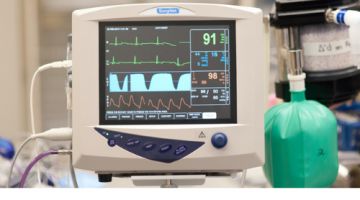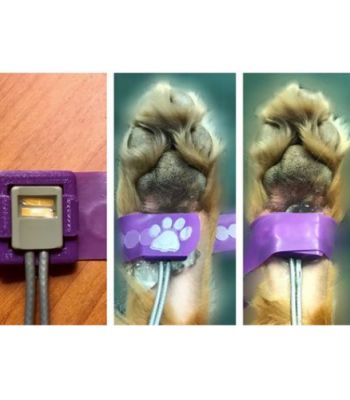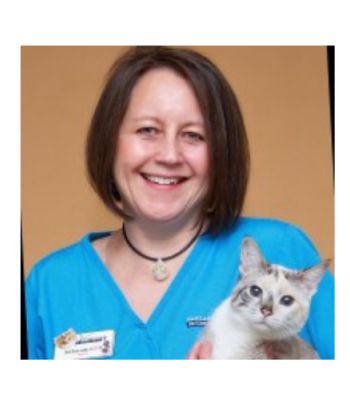Monitoring with Heidi Reuss-Lamky

September 19, 2021 Sunday, 2:00 PM - 4:00 PM

Sari Lieberman
LVT
They say “necessity is the mother of invention. “ I say FRUSTRATION is! I’ve been an LVT for the past 20+ years, and I got so frustrated with the fact that there was no fast or easy way to place and keep a Doppler crystal on my patients for serial blood pressure readings. I was always struggling with taping it on, which is neither fast or easy. I searched everywhere to find a solution, only to find there wasn’t one. So---I developed one myself! Introducing the Doppler Band! It secures the Doppler crystal to a patient in one easy step! The WSAVT would like to thank our sponsor the Doppler Band.
| 2:00pm - 2:10pm |
What is the Doppler Band and why do you need it? The Doppler Band-Doppler Holder is the first device to secure a Doppler to a patient in one easy step! |

Heidi Reuss-Lamky
LVT, VTS (Anesthesia & Analgesia), (Surgery), Fear Free Elite Certified Professional
Ms. Heidi Reuss-Lamky graduated from Michigan State University’s Veterinary Technology Program in 1984. She has extensive experience in general practice, and since 1993 has devoted her technical expertise to the surgical department of specialty hospitals. She has been affiliated with Oakland Veterinary Referral Services in Bloomfield Hills, Michigan, since 2006. Heidi became certified through the Academy of Veterinary Technicians in Anesthesia and Analgesia in 2003, and sat on the credentials committee from 2005 to 2009. She served in the president’s role on the Executive Board of the Michigan Association of Veterinary Technicians from 2007 to 2009. She was a charter member of the Academy of Veterinary Surgical Technicians and currently sits on the executive board. She has a special interest in veterinary behavior medicine and earned her Fear Free Certification in November 2017. Heidi is an ardent advocate for the veterinary technology profession, and serves as a consultant for many allied veterinary industries. She is on the National Association of Veterinary Technicians in America Committee on Veterinary Technician Specialties, and also serves on the editorial review board for Today’s Veterinary Nurse Journal. Heidi is a prolific author and lecturer, presenting anesthesia, surgical nursing, and Fear Free-related topics at veterinary meetings worldwide. She most recently published Chapter 8, “Waste Anesthetic Gas Collection and Consequences,” in Veterinary Anesthetic and Monitoring Equipment, edited by Kristen Cooley and Rebecca Johnson. She was also honored to receive the 2013 NAVC Dr. Jack L. Mara Memorial Lecturer award. Heidi currently shares her home with her husband, Bryan, and 3 dogs, 2 cats, an African grey parrot and pond koi. In her spare time she enjoys horseback riding, gardening, travel, lecturing, and quenching her never-ending thirst for knowledge.
| 2:00pm - 2:50pm |
Anesthetic Monitors—Understanding Their Use & Limitations Technicians interpret data from anesthetic monitors on a routine basis. This presentation covers various monitoring modalities used in assessing the anesthetized patient, as well as common pitfalls and precautions that should be taken while interpreting the data provided by them. Monitoring modalities discussed include esophageal stethoscope, ECG, blood pressure, pulse oximetry, capnography and temperature. Learning Objectives: Explain physiologic process associated with each type of monitoring modality and identify various ways to measure them. (e.g., understand carbon dioxide physiology as relevant to measuring ETCO2; discuss various monitoring methods for ETCO2). Develop skills to troubleshoot equipment, identify malfunction and avoid misinterpretation of the data provided by it. Recognize normal physiologic parameters and identify minimum acceptable values for esophageal stethoscopes, ECG, blood pressure, pulse oximetry, capnography, and temperature for anesthetized small animal patients. |
| 3:00pm - 3:50pm |
Understanding Capnography—It’s Breathtaking! Measuring end-tidal carbon dioxide (ETCO2) utilizing infrared technology was first introduced by Luft in 1943. Since that time, it has evolved into an essential component for monitoring patients in a variety of clinical settings such as throughout the peri-anesthetic episode, during long-term ventilation, or in an emergency room setting. Learn about various methods used to measure ETCO2 as well as the pros and cons associated with each method. Troubleshooting capnograms will also be discussed. Learning Objectives: Anticipate when ventilatory assistance may be indicated in the anesthetic patient. Identify normal and abnormal capnograms. Describe carbon dioxide physiology |
